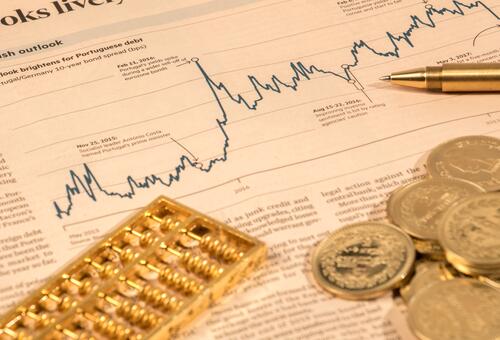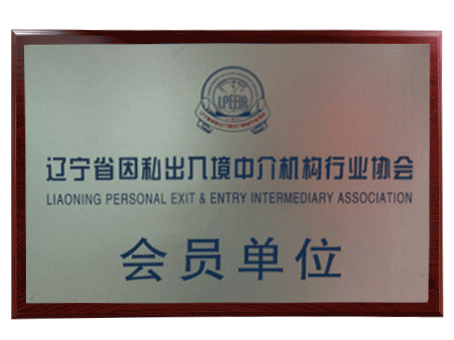
❶获得指导教授的学术推荐信(教授用学校正式 edu 邮箱网推)
❷统科学的指导和训练学生进行学术文章写作和发表(国际 CPCI/EI 会议论文)
❸全英文语境展开项目,突破自我,助力 GT 考试、申请面试和未来学习
❹不出国门跟随海外名校教授学习,节省国际旅费
❺获得高质量英文个人科研报告,可在申请材料中提交

prof.leven
杜克大学经济学教授
联邦储备银行经济学家曾发表多篇极具影响力的论文,并被多次引用.
任职大学
杜克大学( Duke University ),创建于 1838 年,坐落于美国北卡罗来纳州(North Carolina)的达勒姆(Durham),是一所世界顶级的研究型大学。杜克大学是全美最优秀的大学之一,也是美国南部最好的私立大学,在各类排行榜上长期位居美国前十、世界前二十,其商学院、法学院和医学院排名均位列美国前十。Schedule Topics
01/30 Orientation, Opening Ceremony, Welcome Dinner
报到、开营仪式、欢迎晚宴
01/31 Market Evolution, Structure and Instruments
市场演化、结构和工具
02/01 Modeling and Forecasting Exchange Rates
预测汇率与建模
02/02 Exchange Rate Regimes and Monetary Crises
汇率制度与货币危机
02/03 Exchange rates as an asset class
作为资产类别的汇率
02/04 Trends in exchange rate volatility and methods of trading volatility
汇率波动趋势及交易波动方法
02/05 Accounting Conventions and the Implications for Hedging
会计惯例与对对冲的影响
02/06 Case Studies and the Future of Currencies
案例研究以及了解货币的未来趋势
02/07 Evaluation& Final Presentation
测评及项目展示
在地国际化特色
不出国门,就可以跟随海外名校教授进行学术研究,既为学生及其家庭节省了国际旅费又避免了时差等不适应性。
海外名校现职教授全程授课并指导科研导师均为海外名校现职教授/终身教授,具有丰富的学术和科研经验,教授将根据中国学生特点设计课题,学术性与趣味性兼备,让学员在学术框架下,充分发挥想象力和创造力,从开题、文献检索、科研报告撰写、修改等多个环节进行学习,实现理论与实践的融会贯通。
专业 TA/RA 助教全程辅助
助教将经过严格筛选,择优录取相关专业 Master/PhD,并通过系统化培训及考核后参与进入科研项目组。助教将协助学生进行课题知识的预习和复习,并为学员提供辅助性指导和技术支持。此外,助教将与学生分享自身升学、海外学习和科研等经验,更加贴近学生实际情况,提供辅助性建议。全面提升多项能力,提高名校录取几率
为来自全球高中生及大学生提供经济便捷的世界顶级学术研讨和实践的参与机会,帮助学培养批判性思维、分析和创造性思维、复杂沟通-口头和书面表达和全球视野,通过深度学习,帮助学生大幅提高申请几率,并向成为国际水平高精尖领域人才和高水平创新人才更近一步。
Syllabus
Course Title: The Market for Foreign Exchange: Theory and Practice
This course is designed to give students an understanding of the structure of the foreign exchange market – the world’s largest market by turnover – the theoretical basis for currency movements and the interaction of foreign exchange and macro policy. At the end of the course, students will be familiar with the trading conventions and uses of the major instruments, a basic understanding of methods of forecasting exchange rates, how currency can be used as an investment vehicle, methods and pitfalls of currency exposure and the nature of currency crises. Course projects will be designed to give students some perception of the challenges faced by foreign exchange market professionals.
Tentative Schedule - topics covered
Lecture One: Market Evolution, Structure and Instruments: An overview of the history of global monetary markets – especially the transition from the Gold Standard to Bretton Woods to where we are today – including the evolving role of international institutions and central banks and the regulatory environment. Following this will be a discussion on the structure of the market today including flow chains and the specific instruments that are traded – spot, forwards, futures, options and cross-currency swaps. Will also discuss quoting conventions in these markets and some examples of how rogue traders have been able to game the market – at least temporarily.
Lecture Two: Modeling and Forecasting Exchange Rates: An overview of the process and indicators that I utilized to achieve a twenty plus year career of success at advising clients on foreign exchange outlook. Start with an overview of the traditional drivers of exchange rates – especially real valuation and portfolio flows and, also provide some less traditional indicators I have found useful – relative yield curve flatness, risk sentiment, relative asset valuation. implied volatility skewing.
Lecture Three: Exchange Rate Regimes and Monetary Crises: An overview of the common forms of exchange rate regimes, including, pegged rates, exchange rate bands, currency boards, dual rates adopting another country’s currency and China’s unique currency arrangment. In each case we will look at what the regime implies for the central bank’s ability to pursue monetary policy and serve as lender of last resort and how regimes can either help or hinder control of inflation. We will also look what these factors portend for the long-term viability of the Euro and how exchange rate regimes can determine the nature of offshore markets – especially deliverable vs non-deliverable forwards – and why roughly 80% of the world’s currencies do not actively trade at all.
Lecture Four: Exchange rates as an asset class: Start with a general discussion of whether foreign exchange meets the definition of an asset class. We will then consider ways that currency exposure can be effectively brought into a broader portfolio. In this context, we will examine the fact that historically uncovered interest rate parity does not generally hold creating a risk-adjusted “excess” return. But this return has diminished substantially in recent years and we will investigate whether this is due to cyclical or secular factors – i.e., is the carry trade dead. We will also look at methods that compare outright carry vs the carry implied by the option skew.
Lecture Five: Trends in exchange rate volatility and methods of trading volatility: We will investigate why there has been a secular downtrend in volatility in foreign exchange markets for much of the past decade. In doing this we will determine the primary drivers of foreign exchange volatility and how they explain the volatility squeeze. We will also see that foreign exchange volatility is prone to spikes when currencies encounter crises. We will look at the general issue of currency crises and the inter-relationship with sovereign debt. Finally, a brief overview of how and why the volatility market in exchange rates is more sophisticated than any other markets with some examples of exotic option structures and the unique ability to trade correlation.
Lecture Six: Accounting Conventions and the Implications for Hedging: Start with a discussion of economic vs accounting exposure; why are they different and what this implies for hedging. Compare the benefits of hedging on a transactional basis vs a portfolio basis. Examining ways to hedge currencies that do not trade and more broadly looking at when proxy hedging makes sense and how to do it. Finally looking at ways to determine when it makes more sense to hedge via options rather than using forwards
Lecture Seven: Case Studies and the Future of Currencies: Using the tools we have
developed over the course we will dig more deeply into some select currency events – e.g., The Asian currency crisis, the Mexican tequila crisis, the ERM crisis, etc. – focusing on ways that these events could have been anticipated and benchmarks signaling an end of the crisis. The prospects for future crises – both when and where (Brexit?) – will be addressed. We will finish with a discussion on the future of currency trading including the role of cryptocurrencies and the US dollar’s continued role as the global currency assessing what could end its reign and what other currencies could rise in its stead Lecture Eight: Evaluation& Final Presentation
宇宙大爆炸和宇宙进化论
量子物理、相对论和现代物理研究
人类大脑与心理及精神类疾病研究
大脑与行为科学基础研究
信号传导:细胞之间如何进行交流和传导
分子、细胞及发育神经科学研究
人工智能与机器学习
面向初学者的人工智能和机器学习
探究物理世界的奥秘:经典力学
电磁学与电路在工程学中的应用
利用数学和计算机建模促进工程学可持续发展决策
低碳模式下的新兴工程技术和可持续循环系统调研
新媒体浪潮及其对故事性和媒体美学的影响
媒体创作工坊:基于美国新旧媒体对比进行视频创作
新兴市场投资风险和机遇调研
社会人口学:从人口统计看世界发展
基于联合国报告的全球可持续发展研究
公益创业:如何通过社会企业改变世界
从 0 到 1: 如何把握商业机会建立初创企业
资产投资实训
弦理论先导代数几何学
天体物理模拟星系形成
数据科学与AI深度学习- 应用计算机视觉
数据处理与数据科学
市场营销打造品牌战略优势
社会学研究仪式的隐藏力量
人类社会发展中的经典学说研究
企业会计实训和财务报告分析
金融市场分析与企业战略决策
金融建模实训
金融工程与数据分析
计算机图形图像处理
机器学习在计算机网络中的应用
机器学习与数据科学



